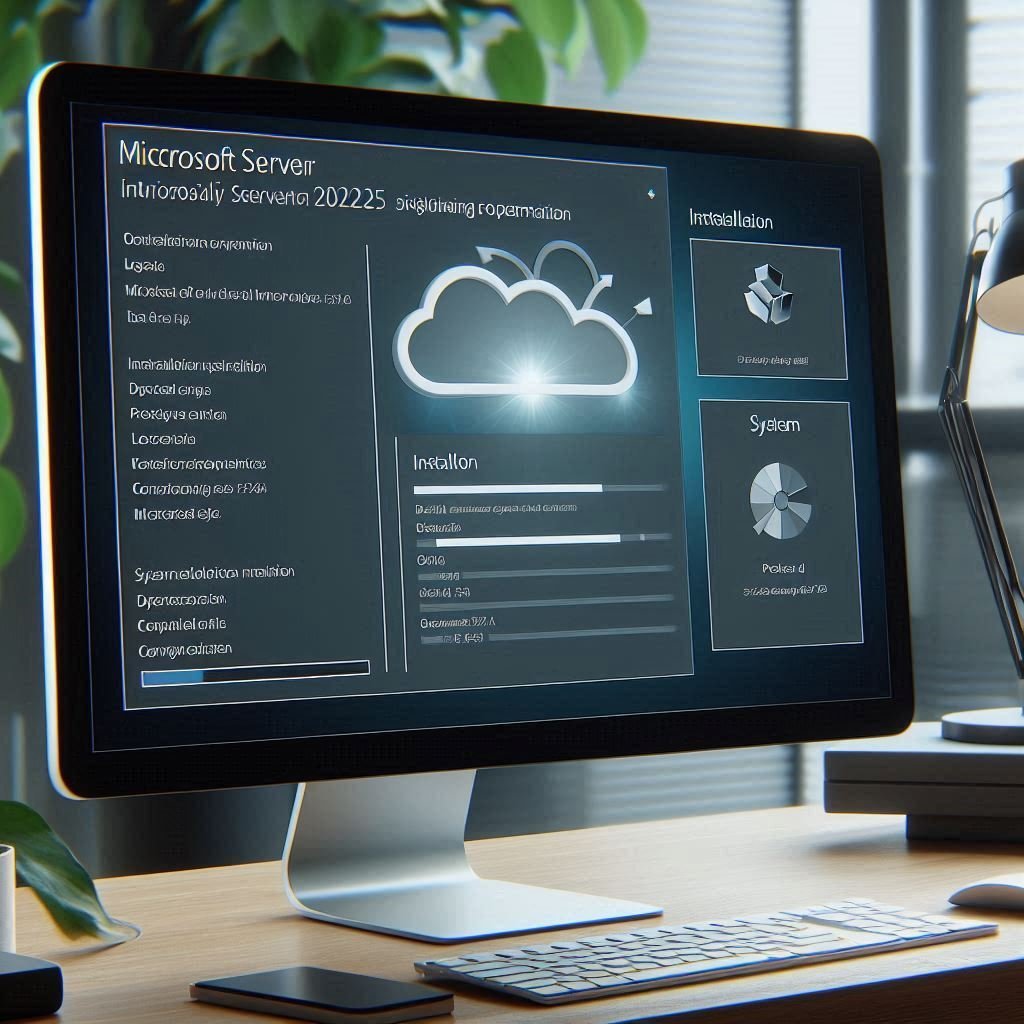
Understanding Microsoft Server 2022
Microsoft Server 2022 represents a significant evolution in the company’s server operating system lineup, presenting new capabilities tailored to the growing demands of modern IT environments. As organizations increasingly lean towards cloud integration and enhanced security, it becomes crucial for IT professionals to understand the features and enhancements of this platform. The latest iteration boasts robust support for hybrid cloud scenarios, allowing businesses to easily connect on-premises servers with Azure, improving flexibility and scalability.
A key feature of Microsoft Server 2022 is its advanced security measures. With built-in layers of protection against current cyber threats, such as secured-core server capabilities and improved Windows Defender, it addresses the escalating need for data security in an interconnected world. These features not only help safeguard sensitive information but also ensure compliance with various industry regulations, making it an essential choice for organizations prioritizing security.
Microsoft Server 2022 also offers significant enhancements in application compatibility and performance. Improved features like the Windows Admin Center and support for containers enhance the management of applications, offering a notable improvement over its predecessors. Understanding these enhancements is vital for businesses that rely on specific applications or look to streamline their operations. Additionally, it supports diverse deployment scenarios, from traditional on-premises implementations to fully virtualized environments, catering to various business needs.
Before embarking on the installation process, it is paramount for businesses to consider the system requirements of Microsoft Server 2022, including hardware specifications and compatibility. Identifying the right deployment scenario according to organizational structure and workload necessities will greatly facilitate a smooth installation. A comprehensive understanding of Microsoft Server 2022 not only ensures that IT teams are prepared to deploy the server effectively but also emphasizes its pivotal role in shaping future IT infrastructure.
Preparing for Installation
Before initiating the installation of Microsoft Server 2022, it is imperative to undertake several preparatory steps to ensure a seamless experience. The first crucial task is to check the hardware compatibility of the server system. Microsoft provides a set of system requirements that must be met for the optimal performance of the server software. This includes verifying the processor, memory, and storage, ensuring that they meet or exceed the specifications outlined by Microsoft.
Next, it is essential to select the appropriate edition of Microsoft Server 2022. The two primary editions available are Standard and Datacenter, each designed with different use cases in mind. The Standard edition is generally suited for smaller environments and offers features necessary for basic deployments. In contrast, the Datacenter edition is tailored for larger organizations requiring extensive virtualization capabilities and enhanced features. Therefore, understanding the organization’s needs is crucial to make an informed decision.
Ensuring the availability of the required licenses is another important step. Organizations must confirm that they possess the necessary licenses for the chosen edition to comply with Microsoft’s licensing agreements. Failing to secure the requisite licenses can lead to legal ramifications and operational disruptions.
Additionally, before proceeding with the installation, it is prudent to create a backup of existing data. This precaution minimizes the risk of data loss during the installation process and ensures that critical information can be recovered if necessary. Once the preliminary checks are complete, creating installation media is the next step. This can be accomplished using tools such as the Microsoft Media Creation Tool or by downloading an ISO file from the official website.
Finally, configuring the BIOS settings is essential to ensure the server can boot from the installation media. Adjustments may include setting the correct boot order or enabling specific features such as UEFI or Legacy BIOS. These preparatory measures are essential for guaranteeing a successful installation of Microsoft Server 2022.
Step-by-Step Installation Process
The installation of Microsoft Server 2022 is a crucial phase that requires careful planning and execution. To ensure a successful setup, follow these detailed steps.
Start with the initial setup by obtaining the Microsoft Server 2022 installation media. This can be in the form of a bootable USB drive or an ISO file, depending on your preference. Once you have the installation media ready, insert it into the server and boot from it. During the boot process, you may need to change the BIOS settings to prioritize booting from the selected media.
After booting from the installation media, you will be presented with the Windows Setup screen. Here, select your preferred language, time format, and keyboard layout. Click “Next” to proceed. You will then arrive at the installation options where you need to choose between a server core installation and a desktop experience. The core installation is more lightweight and suited for advanced users, while the desktop experience is ideal for those who prefer a graphical interface.
Following your selection, you will need to agree to the license terms. Next comes the disk partitioning phase. You can choose to either create new partitions or use existing ones, depending on your storage configuration. Microsoft recommends setting up a dedicated partition for the system to optimize performance.
After the partitions are set, click “Next,” and the installation will begin. This process may take several minutes. Once completed, your server will restart, and you will be guided through the configuration of essential settings, such as server roles and features. At this stage, you may also want to assign a static IP address to ensure network stability.
Throughout the installation, it’s vital to troubleshoot any common issues that may arise, such as hardware compatibility or network connectivity problems. Ensure all hardware meets the requirements for Microsoft Server 2022 and verify that drivers are updated. By meticulously following these steps, users can set up Microsoft Server 2022 effectively, paving the way for further configuration and utilization in their respective environments.
Post-Installation Configuration and Management
Once the installation of Microsoft Server 2022 is complete, the next critical step is configuring the server to meet organizational needs. Effective post-installation configuration not only optimizes server performance but also enhances security and user management. The first step in this process is setting up Active Directory, which serves as the backbone for user management and security enforcement. To do this, open the Server Manager dashboard, navigate to the “Manage” menu, and select “Add Roles and Features.” Here, you can install the Active Directory Domain Services role, which allows you to create and manage user accounts and security groups.
Next, configuring network settings is essential for ensuring the server communicates effectively with other network resources. Head to the Network Connections settings and verify the server’s IP configuration. Assigning a static IP address is recommended, as it helps in better managing your network traffic and establishes a reliable connection for other devices. Alongside network configurations, Windows Server 2022 provides options for setting up DNS roles, which are crucial for network name resolution and domain location.
User and permissions management is paramount for maintaining security within your organization. Utilize the Active Directory Users and Computers console to create user accounts and groups, assigning the appropriate permissions based on role requirements. This feature allows for fine-tuning user access and protecting sensitive data within your network.
In addition to these configuration tasks, applying security best practices is crucial. Enforce strong password policies, enable Windows Firewall, and regularly apply updates and patches. Keeping your server updated not only improves performance but also shields it from potential vulnerabilities. You can automate updates through the Windows Update Service or apply patches manually, depending on your organizational policies. By diligently following these post-installation procedures, you will ensure a well-configured and secure environment on Microsoft Server 2022.
